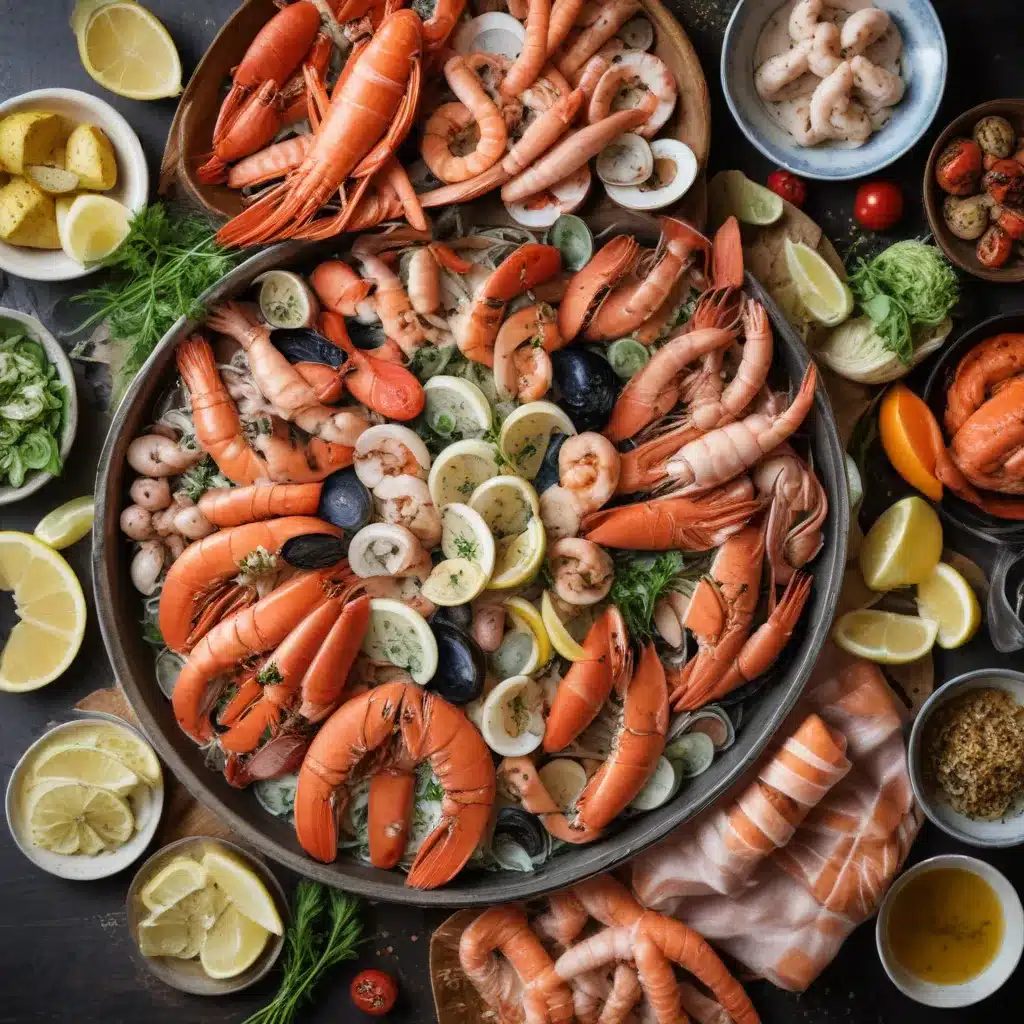
Seafood has long been a cherished ingredient in cuisines around the world, with each region embracing its own unique culinary traditions. From the salty, briny flavors of coastal regions to the delicate, refined preparations of inland areas, the diversity of seafood dishes is a testament to the ingenuity and creativity of cultures worldwide.
Global Seafood Cuisines
Asian Seafood Dishes
Asia is renowned for its vibrant and flavorful seafood preparations. In Japan, the sushi and sashimi traditions showcase the freshness and quality of the catch, while in Thailand, the aromatic tom yum goong soup highlights the sweetness of shrimp and the complexity of lemongrass and kaffir lime. China’s coastal provinces offer a wide range of seafood delicacies, such as the delicate steamed or poached fish dishes and the savory Cantonese-style clam and crab preparations.
Mediterranean Seafood Specialties
The Mediterranean region has a rich seafood heritage, with Italy, Spain, and Greece leading the charge. In Italy, the spaghetti alle vongole (clam pasta) and the fish stew known as cioppino showcase the bountiful catches from the Adriatic and Tyrrhenian Seas. Spain’s coastal regions are renowned for their paella, a rice dish that can feature an array of seafood, from shrimp and squid to mussels and clams. Greece’s grilled whole fish, often served with a simple lemon-olive oil dressing, highlights the freshness and quality of the local catch.
North American Coastal Cuisine
The coastal regions of North America have also developed their own distinctive seafood traditions. In New England, the clam chowder and the lobster roll are quintessential staples, reflecting the abundance of clams and lobsters in the cold, nutrient-rich waters. The Pacific Northwest, meanwhile, is renowned for its salmon, which is often smoked, grilled, or poached to perfection. The coastal regions of Canada and the Maritimes are equally celebrated for their succulent oysters, mussels, and crab.
Sustainable Seafood Practices
As the global demand for seafood continues to rise, it is essential to ensure that our seafood consumption is sustainable and environmentally responsible. Many regions around the world have implemented responsible fishing methods, such as line-caught fishing and selective gillnetting, to minimize bycatch and protect fragile marine ecosystems. Additionally, the aquaculture industry has made significant strides in developing innovative and eco-friendly farming techniques, ensuring a reliable and sustainable source of seafood.
Seafood Preparation Techniques
Seafood preparation techniques vary widely across cultures, with each region embracing its own unique methods and flavor profiles. Curing, brining, and smoking are common preservation techniques that not only extend the shelf life of seafood but also impart distinct flavors. Cooking methods, such as grilling, poaching, steaming, and pan-searing, allow the natural sweetness and delicacy of seafood to shine. The judicious use of herbs, spices, and acidic elements, such as citrus or vinegar, can further enhance the seafood’s inherent flavors.
Nutritional Benefits of Seafood
Seafood is widely recognized for its exceptional nutritional profile, rich in omega-3 fatty acids, protein, and a variety of essential vitamins and minerals. Incorporating seafood into a balanced diet has been linked to numerous health benefits, including improved cardiovascular health, brain function, and reduced inflammation. Seafood’s versatility and the wide range of species available make it an excellent choice for maintaining a well-rounded and nutritious dietary regimen.
Seafood Trends and Innovations
As consumer preferences and culinary trends evolve, the seafood industry has responded with a range of innovative products and preparations. The emergence of plant-based seafood alternatives has opened up new possibilities for those seeking to reduce their environmental impact or accommodate dietary restrictions. Additionally, the exploration of lesser-known or underutilized seafood species, such as lionfish, barramundi, and sea urchin, has introduced diners to a whole new world of flavors and textures.
Cultural Significance of Seafood
Seafood holds a deep cultural significance in many regions, woven into the fabric of local traditions, religious practices, and artistic expression. Coastal communities often celebrate their seafaring heritage through festivals, ceremonies, and traditional fishing methods that have been passed down through generations. In some cultures, seafood is used in religious rituals and ceremonial dishes, reflecting its sacred and symbolic importance. Seafood has also inspired countless works of art, literature, and music, further cementing its place in the cultural tapestry of the world.
Challenges in the Seafood Industry
While the culinary traditions and innovations surrounding seafood are truly remarkable, the industry faces a number of challenges that must be addressed. Overfishing and the depletion of marine resources are pressing concerns, requiring collaborative efforts to implement sustainable fishing practices and promote ocean conservation. Additionally, the issue of seafood fraud, where mislabeled or substituted products are sold to unsuspecting consumers, highlights the need for robust regulatory frameworks and improved supply chain transparency.
Seafood Cuisine Around the World
The global diversity of seafood cuisine is a testament to the ingenuity and creativity of cultures worldwide. From the delicate sushi of Japan to the robust cioppino of the Mediterranean, each region has embraced the bounty of the sea and transformed it into a culinary masterpiece. By exploring the rich traditions, innovative preparations, and cultural significance of seafood, we can gain a deeper appreciation for the remarkable culinary landscape that spans the globe.
Whether you’re a seafood enthusiast or a curious culinary explorer, the world of seafood cuisine awaits. Discover the flavors, techniques, and stories that make this facet of the culinary world truly remarkable. Visit Fish Tales Cafe to embark on your own seafood journey, where you can savor the diverse and delicious offerings that the oceans have to offer.

